The Sectionman’s Home (Middle of Nowhere)
This sectionman’s home stood in the literal middle of nowhere and depending on your take that might be either a downside or perk of the job. If you were to ask us, we’d lean more towards the latter. It’s really out there in the sense that the nearest anything, civilization wise, is quite some distance away and over the horizon.
We’ll explain the sectionman’s duties soon enough and why it forced them to live in such a remote place. This is going to takes us back in time and the memories might be distant, yet there’s remains here to help piece together a story. History is history and the enigmatic kind is held in higher regard than the widely celebrated. In our world. amyway.
The Sectionman’s Home (Middle of Nowhere): file it under obscure with history nuts Chris Doering & Connie Biggart (BIGDoer/Synd).
Be like Paul…
This day we’re on the Alberta plains, out in the eastern part of the province, and there’s nothing else around as far as can be seen. It’s just pasture, flat and very natural but probably little changed over the centuries, plus the occasional road, usually gravel. Otherwise there’s not much that speaks of human habitation and we bet you could go back a century or more and it would probably appear little different from today. It’s a timeless place.
Over there, down an abandoned railway line, a crumbling foundation is spotted along with a lone tree and these mark the site of a home used by a track worker from long ago (aka, the sectionman). It’s a section house and the company supplied it.
Once, these could be found at regular intervals up and down countless railway lines and while some might be more remote than others, we doubt any could match this one in that regard. Nowhere is more lonely. Given the line was never particularly busy, no doubt added to the sense of isolation. Trains were few and infrequent.
As a sectionman you could count on the occasional bull-session with various railway workers passing through (other maintenance people or train crews), but that’s it. Little was going on along this stretch and it made for an even more lonely existence than typical.
However, these jobs were usually given to those with families, so at least there was someone to go home to. Unless the bunch of you didn’t get along in which case it made matters worse.
A sectionman got assigned a specific stretch of railway line to patrol and maintain. Usually they commuted by speeder (handcar or velocipede in the early days) and the work backbreaking in nature. Good weather or bad, it had to be done. Tightening loose rail bolts and replacing missing spikes, plus general track inspections were the most common duties.
It was not just that, however, and upkeep of line-side infrastructure would similarly be part of the job. So water towers, bridges, telegraph lines and whatever else. In winter, the sectionman would stoke coal stoves used to keep water towers from freezing, but mostly it was track related work that kept them good and busy.
If there were any heavy jobs to be done a call out was made to a higher-up and travelling maintenance crews plus any machinery needed would be brought in. Still the sectionman did the minor day to day grunt work, all in relative obscurity and the system functioned beautifully. They were a coordinated army, unseen and yet unrivalled in importance.
Any supplies needed by this employee and family would be brought in by train as needed.
This sectionman’s home dates back to about the time the railway came thought here, so the 1910s and data suggests it stood into the 1950s. There’s so little history about places like this and as such an exact timeline remains a mystery. Still, the end date seems about right, and by that time, the days of live-on-site track worker was coming to an end. This happened everywhere and not just along this line
Train crews were then entrusted to keep a close eye on things and a maintenance crew dispatched to where needed based on their intel. Things were changing and the railways doing things differently.
This Canadian Pacific branch was rarely that busy, on this end, and could be served from a second connection to the west. It was a bit redundant and later an unwanted step child. By the 1950s there were usually only a couples trains per week and by the 1970s, when finally abandoned, service was pretty much as needed.
If not for government regulations of the time, which made pulling-up a line near impossible in all but the most extreme cases, the CPR no doubt would have rid itself of this stretch earlier. There was little in the way of customers and no hope for new business.
While there was no town here in the traditional sense they did have a depot of sorts just down from the section house for locals coming and going by train. No photos of it have come to light, as of yet, but given the area’s tiny population it must have been something modest in form. Shed sized perhaps?
Outside that structure, there may have been a school, post office or store nearby, but no municipality. People in the area lived on farms and still do…the few that call this dry-belt area home that is. Population data suggests there were actually a fair number more people during the settlement phase (when the railway came through), verses today in area. FYI, the nearest farm is a couple clicks from the sectionman’s home.
Section houses were built to a common plan and everyone we’ve seen belonging to the CPR has been similar in form and layout. So 1.5 stories, L shaped in footprint, with a living room and kitchen on the main level and a couple bedrooms upstairs. See: Section House.
The CPR built these by the hundreds and most (or all) lacked indoor plumbing or electricity. At the start, anyway. A coal fired stove or furnace usually provided heat. Survivors might get modern upgrades as needed, but they were always pretty primitive. So cheap – the railways are frugal and unapologetic in that regard.
A nearby well, located between the tracks and home, functioned as the water supply in this case. The cement-lined hole has been filled with rocks and this no doubt done by someone (the present day grazing association?) to keep roaming livestock from falling in accidentally.
No doubt there was a biffy out back to do one’s business. The winds here are brutal and even going pee probably quite the hardship if the weather turned foul. That happened often, especially in winter.
Don’t get us started about winter out on the plains – it’s wide open here and there’s nothing much to help block any gusts. Well, there’s the one tree you see but it wouldn’t do much. It’s half dead now but seems to be holding on. Note the bird nest up there and it’s about the only place any winged beasts could find a home. As the only tree for clicks around, it’s their only choice. We call these John Sharpe Trees, for a friend who loved photographing solitary ones.
There was likely a garden on site (they seem common in section house photos of old we’ve seen) and perhaps other out buildings. Only the foundation of the house remains, however. We don’t think it had a basement in the true sense, but appears to have had a root cellar. Old bricks, broken wood and odd bits lie about underfoot. Not much left here but even when the sectionman’s home was standing, it was about the only thing around.
In addition, there would have been a shed or two somewhere nearby for work related equipment, tools and supplies.
Even though the line here got pulled some fifty years ago, more than a few cross-ties have survived in place into today.
The ballast seems to mostly be made up of old cinders, clinkers and ash. These are a by-product of burning coal (in locomotives or boilers in company structures) and collected up to be used this way. They had a need and railways are notoriously tight-fisted, so think of it as a perfect marriage. Recycling railway style, not for the environment but because they’re cheap-ass bastards.
We’ll never know the names of the people who were employed as sectionmen along this line but we can paint a mental image. We see a gruff loner type dressed in coveralls and cap. A no-nonsense few-words type of guy. It’s likely several successive workers lived here and no doubt some came and went quickly and others hung around longer. It’s not a job for everyone, but the remote aspects must have dissuaded certain ones after a short time. I signed up for this?
In the links to follow one can read more about a couple still-standing CPR section houses we’ve come across. The one discussed here, by virtue of its footprint, must be similar. Here Down by the Tracks in Coronation Alberta and Section House.
Know more (new window): Railway Section House.
They’re saying…
”The Team is documenting old Alberta before it disappears…” Terry Elrod.
More remote stuff…
This is Alderson.
Green Door Ranch.
80 Years Empty.
If you wish more information on what’s seen here, don’t hesitate to: contact us!
Date of Adventure: October, 2023.
Location(s): Eastern Alberta.
Article references and thanks: Author Geoffrey Lester, UofC Photo Archives and CPR Archives.
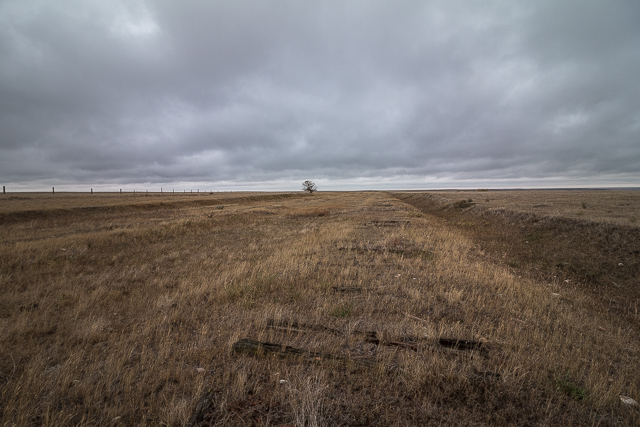
The sectionman’s home sat beside that lone tree – note the old ties.
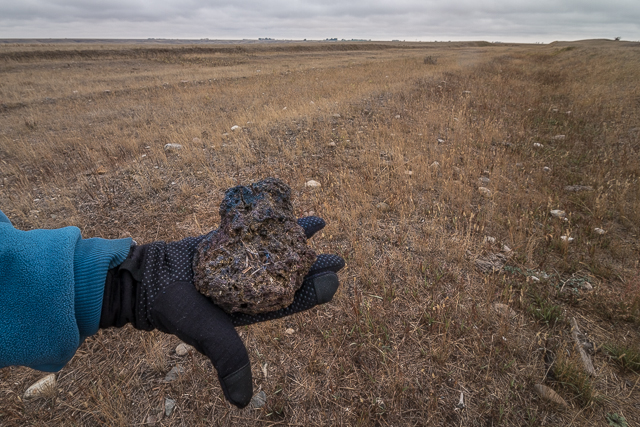
Clinker from steam locomotives was often used for ballast.
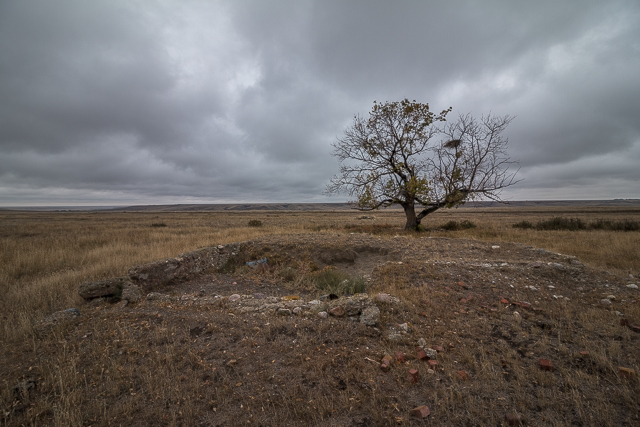
This crumbling foundation marks the site.
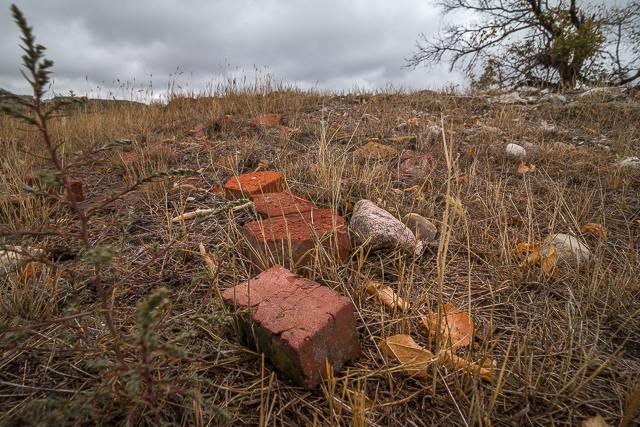
Odd bits are scattered about.
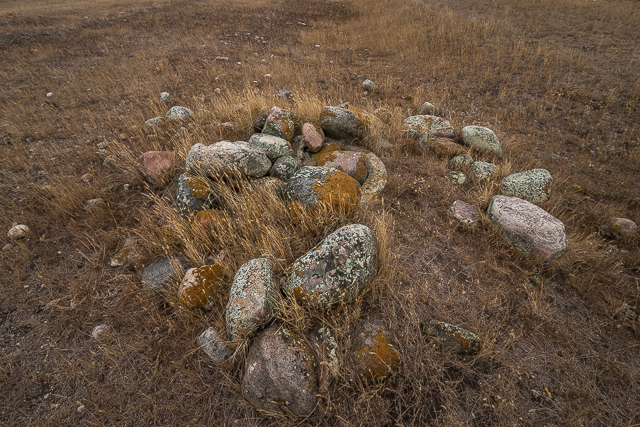
The well was filled in with rocks.
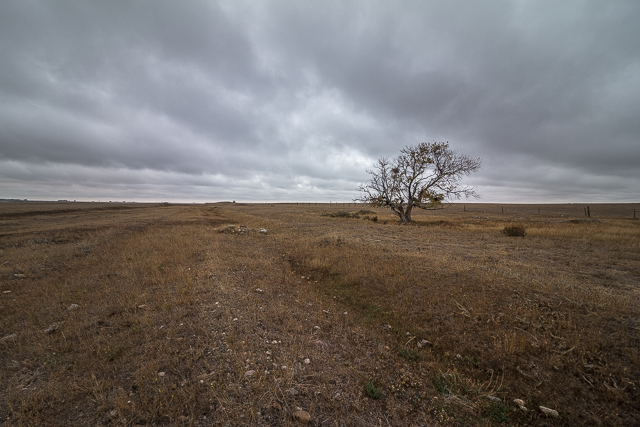
Railway: gone – section house: gone – everything: GONE.
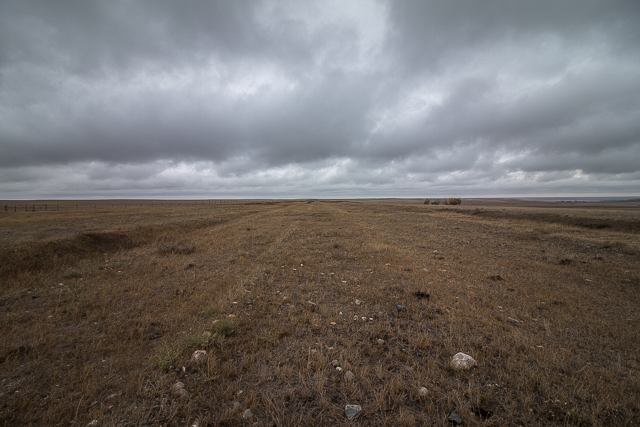
On the roadbed looking east with nothing else around!
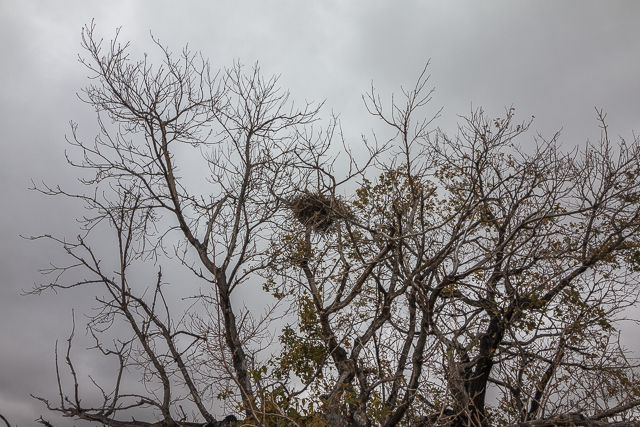
The tree’s half dead but somehow hanging on.

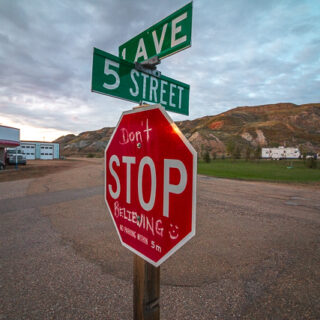
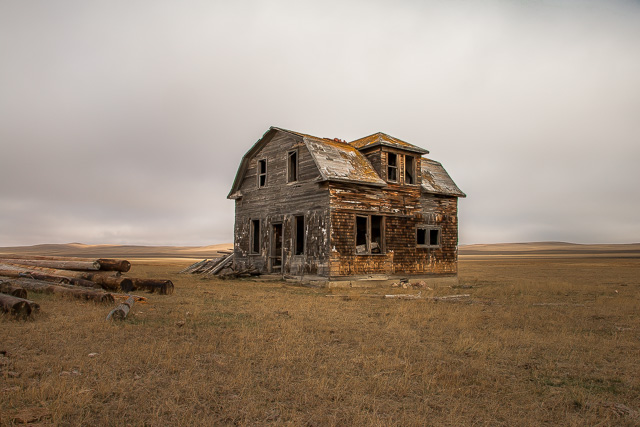
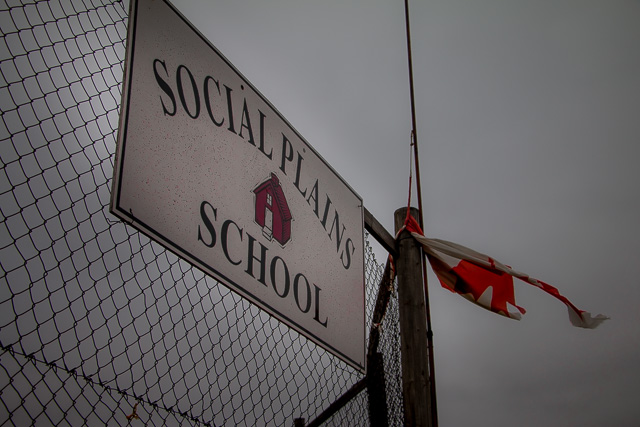
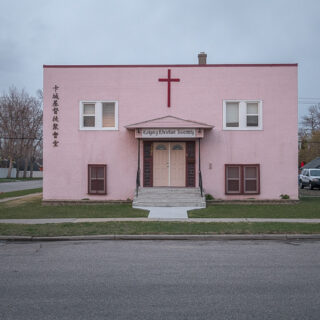
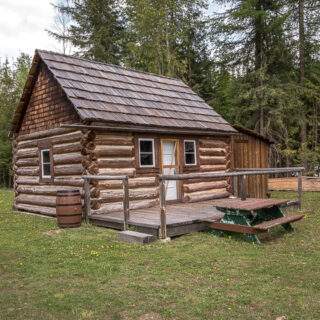
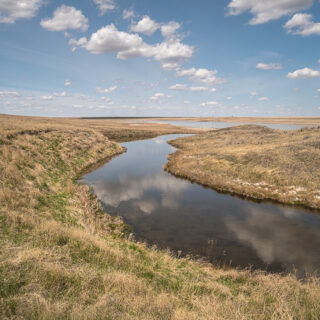
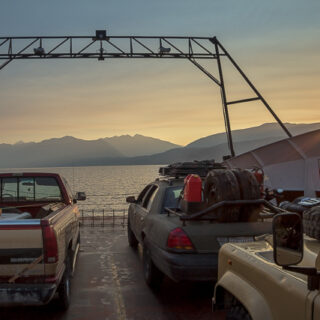
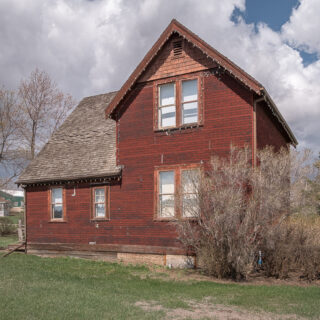
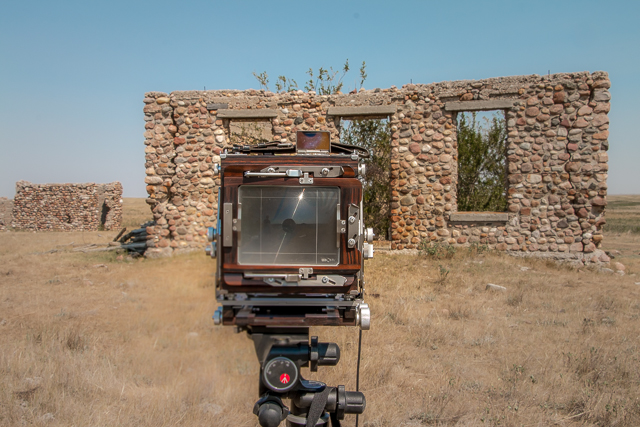
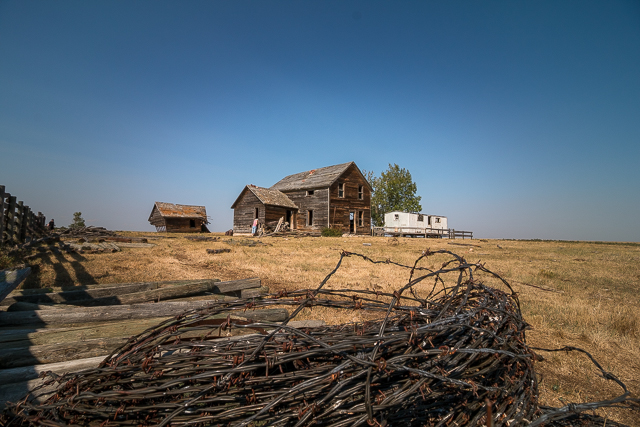
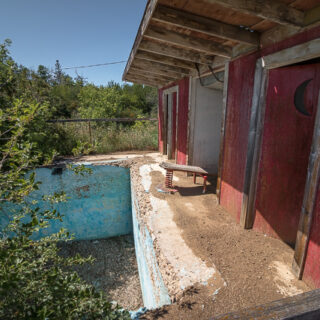
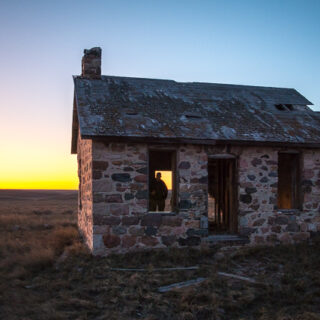







Comments are currently turned off